Petroleum coke is a clean, efficient alternative to coal with advantages over traditional solid fuels. Widely used in cement and power plants, it also supports industries like graphite, steel, aluminum, glass, paint, fertilizer, and paper.
If you are interested in petroleum coke and its crushing and grinding process, please carefully read this blog.
What is petroleum coke
Petroleum coke (petcoke) is a carbon-rich solid byproduct of petroleum refining and cracking, containing heavy metals, sulfur, and hydrogen. Innovations in bitumen extraction have recently increased its production.
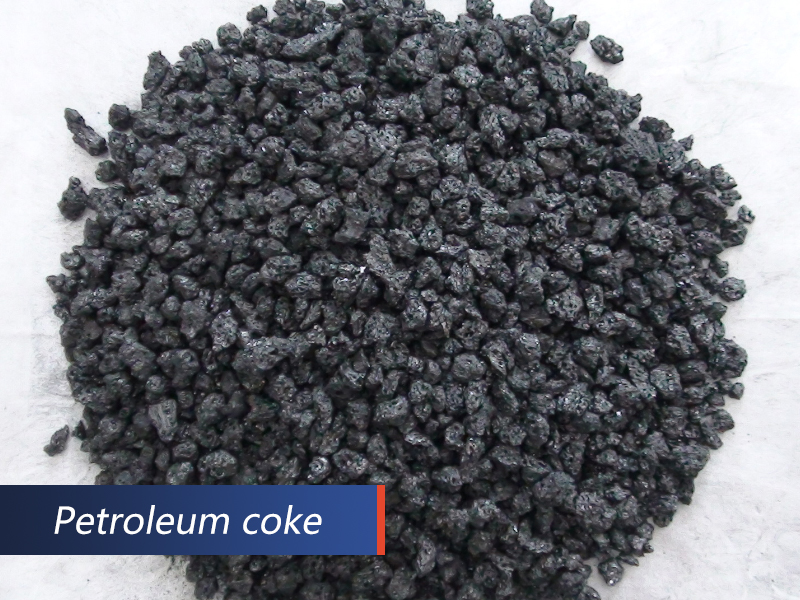
The chemical formula for petcoke is CnH2n. It is hard and brittle, and ranges in size from 0 to 50 mm. The United States, China, India, Saudi Arabia, Canada, and Russia are the largest coke producers.
This black solid coke is a fossil fuel like coal, but why is it more popular than coal?
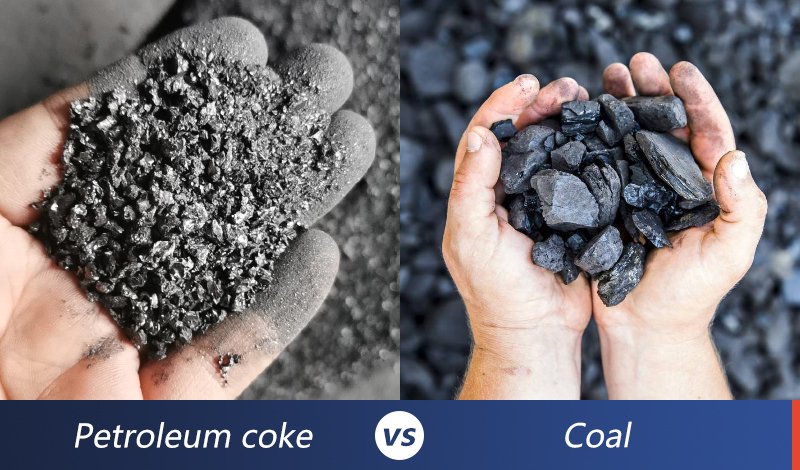
Petroleum coke vs coal
|
Characteristics
|
Petroleum coke | Coal |
| Formation | by-product of the coking process | Naturally occurring |
| HGI (Measure of hardness) | 35–40 | 50–55, harder to grind |
| Density | ≤1.4 g/cm3 | 1.05–1.70g/cm3 |
| Carbon content | 85%–99% | 55%–60% |
| Ash content | 0.5%–1% | 14%–20% |
| Sulfur content | 0.2%–7% | Lower |
| Calorific value | 8,000–10,000 BTU/lb | 3,800–5,500 BTU/lb |
| Uses | Used as fuels and raw materials for products like colorants, paints, coatings, etc | Used as fuels |
| Safety | Extremely stable, low in volatiles. May pollute the air and explode | May spontaneously ignite and cause dust explosion when exposed to open flames |
As a result, petroleum coke has a higher carbon content and calorific value, less ash, and is more stable. More heat can be obtained safely and reliably using less fuel.
In addition, petcoke is cheap to produce and highly profitable. It sells for $30–120 per ton and is easily exported, making it an attractive fuel source for developing countries.
Types of petroleum coke
Based on the characteristics and industrial uses, petroleum coke can be broadly classified into five types: fuel-grade coke, calcined petroleum coke (CPC), needle coke, sponge coke, and spherical coke.
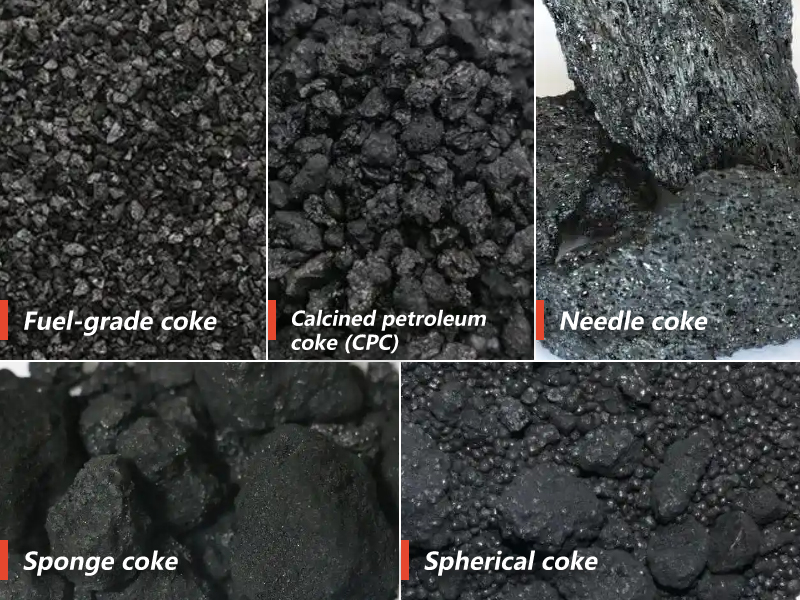
1. Fuel-grade coke
Fuel-grade coke is a low-grade petcoke with sulfur and heavy metal impurities. It is the most common and affordable and is used in power generation and cement kilns. About 80% of global output, mostly from the U.S., is exported to China for thermal power.
2. Calcined petroleum coke (CPC)
Calcined petroleum coke (CPC) is made by baking raw petroleum coke (known as green coke) to remove volatiles and moisture. This baking increases its carbon content so that it is used in the aluminum smelting and steel production industries.
3. Needle coke
Needle coke is a premium petroleum coke with a needle-like structure, low sulfur, and high conductivity. Its low resistivity and thermal expansion make it ideal for graphite electrodes and electric steel furnaces.
4. Sponge coke
Sponge coke is produced by delayed coking. It is less dense than other cokes and more porous. It is cheaper than needle coke and absorbs gases and liquids more efficiently, so it is widely used in the production of fuel and aluminum products.
5. Spherical coke
Spherical coke, or projectile coke, forms from small and tough particles during high-temperature coking or from low-quality raw materials. With high sulfur content and handling challenges, it has limited industrial use but serves as fuel in ceramic, glass, and cement kilns.
How to grind petroleum coke?
Taking a petroleum coke grinding plant in Iran as an example, let's discuss the grinding process and relevant equipment of petroleum coke.
This powder grinding plant processes needle coke with a particle size of 1.7 to 30 mm. After mineral testing, its carbon content is 86%.
The project requires a production of 20 tons per hour, and the powder produced is mainly used for graphite production in the lithium battery industry.
Petroleum coke grinding process
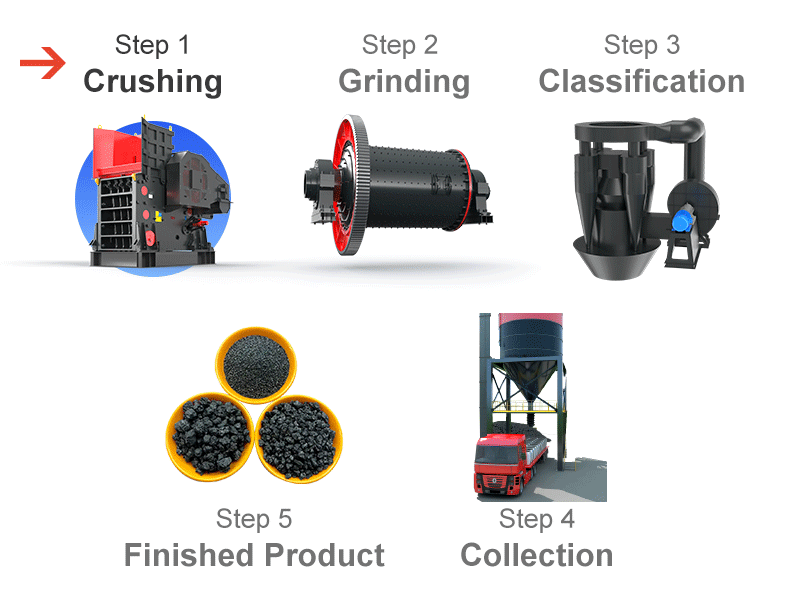
Step 1 Crushing: Primary and secondary crushers crush petcoke into 15–50 mm feed-sized pieces for grinding.
Step 2 Grinding: Conveyors feed small materials into the mill, where they are ground into fine powder.
Step 3 Classification: A powder selector sorts the powder; unqualified particles return for regrinding until they meet the powder fineness of 0–1 mm, 1–5 mm, or 5–15 mm.
Step 4 Collection: Qualified powder enters the powder collection system under the action of airflow. The finished powder is sent to the finished product silo by the conveyor and then packaged by the powder tank truck or automatic packaging machine.
Step 5 Finished Product: The petcoke powder is measured and weighed with aggregates and binders according to the formula requirements, and then the raw materials are mixed evenly and finally plastically formed.
Note:
Petcoke must be stored in a dry place or it will form a hard "wet coke" solid. This can be easily removed with a ripper (a high-pressure water hose).
Petroleum coke crushers and mills
Crushers can effectively break large pieces of petroleum coke into the desired particle size. This not only improves the efficiency of subsequent processes such as grinding and activation, but also facilitates storage and transportation.
1. Jaw crusher
A jaw crusher is the most commonly used primary crusher. It adopts the principle of extrusion crushing and can crush large pieces of petroleum coke.
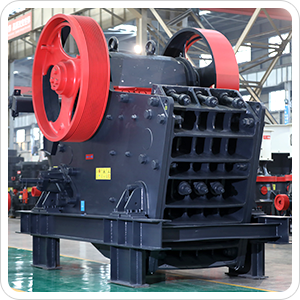
- Large feed port accommodates materials up to 1,200 mm
- Deep cavity design enhances coke throughput
- High crushing capacity enables the production of up to 1,200 tons per hour
- Equipped with wear-resistant high manganese steel jaw plates for extended service life
- Smooth operation, simple structure, and low failure rate
2. Double toothed roll crusher
The optimal secondary crusher for petcoke is the double toothed roll crusher, as it can process wet and sticky materials while minimizing the production of fine powder.
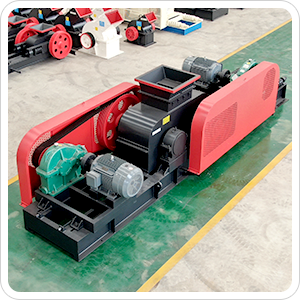
- It crushes coke through the combined action of squeezing and shearing using two counter-rotating serrated rollers
- Feed size: within 30 mm
- Large crushing ratio, the particle size can reach 2–10 mm
- Uniform material discharge and good particle shape
- Simple structure and quick replacement of wear parts (e.g., tooth rollers)
- Less dust, less energy, and eco-friendly
Grinding mills are essential to petroleum coke processing in refineries and power plants, providing precise size, efficient material flow and reduced operating costs. You can choose any grinding mill for your powder grinding plant.
1. Ball mill
After the ball mill is crushed, the oil resources can be recycled and reused, saving energy costs.

- Grinding methods can be dry or wet
- Feed size is less than 25 mm
- Continuous grinding makes it possible to meet large-scale production
- The fine particle size of the output material can reach 20–200 mesh
- Wear-resistant parts, easy to maintain, long life
- Sealed design to prevent dust spillage, environmentally friendly and safe
2. Untrafine mill
Ultrafine mill is designed to crush and grind petroleum coke into ultrafine particles, typically in the micron or submicron range.
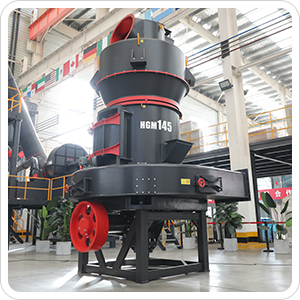
- It uses high-speed rotating blades and fixed grinding discs to reduce coke size through shearing, friction, and impact
- High grinding efficiency, large capacity
- Adjustable fineness up to 800 mesh with unique powder
- High-quality output, suitable for ink, coating, rubber, plastic, and other industries
- It features energy-saving technology, lower emissions, and a built-in dust control system for eco-friendly, safe operation

